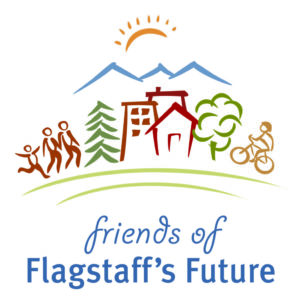1. In Flagstaff, our indigenous community has been marginalized for centuries. Nationally, there are efforts to limit the teaching of the histories of marginalized populations in the U.S. How would you ensure that Flagstaff is an inclusive and welcoming community and do you have ideas for how to include historically marginalized groups in local policy decisions?
What is taught in our school is not in the scope of the city council. But what our local government can do is to engage our community members in an equitable manner when making policy decisions. For example, expanding our community engagement efforts to ensure that the people most affected and most marginalized, have a say in the decisions that affect their lives. Not just the small group of squeaky wheels that show up to public participation at city council meetings held at times not conducive to many peoples’ schedules or that don’t have access to transportation.
2. Northern Arizona Healthcare is proposing to move Flagstaff’s hospital from the center of town to a new location near Fort Tuthill. Do you have any concerns about the impact of this move on the Flagstaff community? How will you approach NAH to ensure that all new construction is in line with the city’s carbon neutrality plan, including the utilization of clean energy sources? How will you ensure that the City is not burdened with expenses associated with the move, e.g., with the need for an additional bus line, emergency services, etc.?
The biggest question/concern I have regarding the NAH move is: what will become of the current campus? There are many opportunities for Flagstaff with the existing campus. I look forward to working with NAH to ensure their new campus will be inline with what’s best for northern Arizona. My understanding is that NAH has already submitted their plans for development and the current city council will vote on their construction plans prior to November 8th.
3. Which state laws do you see as impediments to the city’s ability to craft appropriate regulations? Which of these would you prioritize as a target for the City’s lobbyist?
I had been focusing on the state level control of short-term rentals but on June 24, 2022 the State Legislators passed AZ SB1168 providing local oversight of vacation rentals; short-term rentals and enforcement. I look forward to working on solutions and oversight that benefits both the local housing community and property owners.
4. The uncertainty of climate change impacts on Flagstaff’s water supply, coupled with projected growth means that the City is looking for additional sources of water for Flagstaff’s residents. What is your opinion of the Red Gap Ranch pipeline project and proposals to increase our drinking water supply with treated wastewater (indirect or direct potable reuse)? What do you believe is the best way to protect our water resources from contamination by compounds of emerging concern? How can the Flagstaff City Council ensure that growth does not impact an adequate and safe water supply for our population now and into the future?
Flagstaff Water Services published its Strategic Plan 2025 in January 2020. This strategic plan covers assessing and mitigating risks and strategic objectives which include planning for the future water needs of our growing community including the Red Gap Ranch pipeline project. The city councils’ role will be to ask questions, listen, learn, and make future policy decisions based on the recommendations of the experts when appropriate to ensure we stay in front of anticipated changes to our water sources and capacity.
5. The needs of the residents of Flagstaff are changing and will continue to do so as climate change impacts are felt locally. We face the disastrous cycle of severe wildfires (e.g., the Tunnel, Pipeline, and Museum fires) followed by devastating flooding. How should the City respond strategically, proactively, and equitably to predicted local impacts on our neighborhoods?
Wildfires have been a threat as well as a reality to Flagstaff for decades. We are a city surrounded by a forest. Our local mountains are still recovering from the Radio Fire back in 1977 that scorched the peak of Mount Elden. The scars are still very evident. The city of Flagstaff should budget for an emergency fund to quickly respond to future natural disasters like fires and be able to get ahead of the anticipated flooding. The city can also be proactive in pursuing partnerships with other agencies to continue efforts to ensure we are doing everything possible for forest health and management.
6. The City has begun the “Visioning” (Phase II) of the Flagstaff Regional Plan 2045. This plan is mandated and is a policy guide focused on land use. The Regional Plan covers a range of topics with information on current conditions, the community’s vision for the future, and goals and policies to realize the future vision. What is your vision of the future of Flagstaff related to land use and development and what goals do you believe should be included in the Plan?
The Flagstaff Regional Plan is a blueprint for current and future council members to use as a guide when making policy decisions. My vision is to follow the will of the people and not to deviate from the regional plan to fit a personal agenda.
